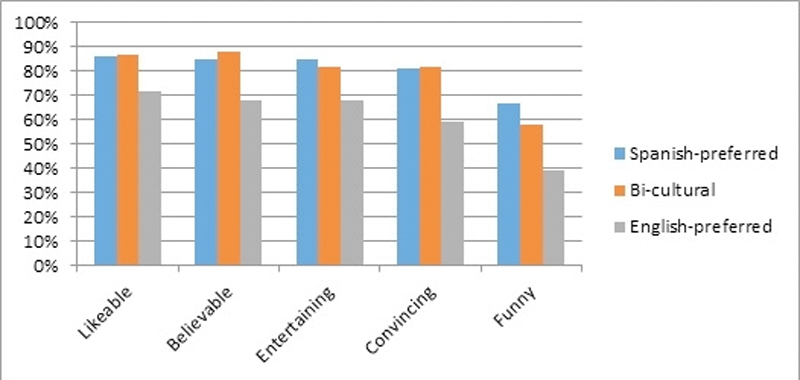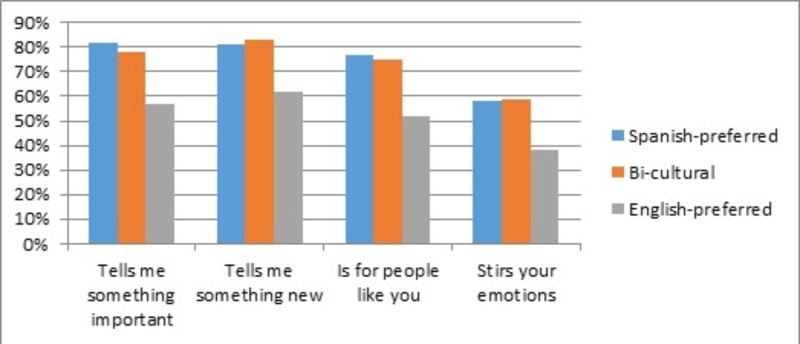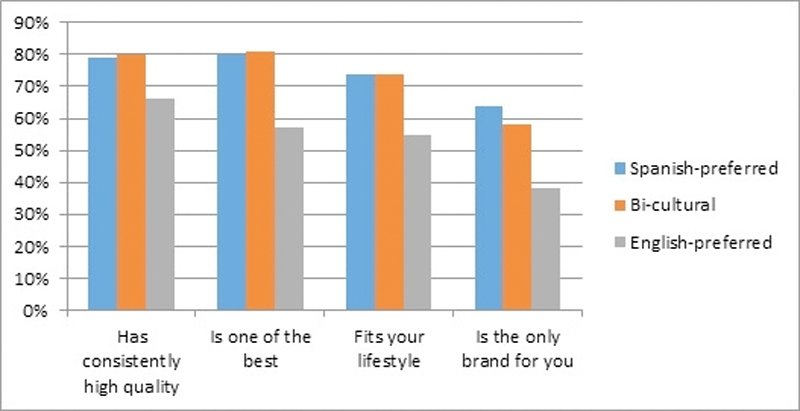Bilingual Advertising: The Next Thing Or Next Mistake? [ ¿INSIGHT? ]
December 2, 2014

The Story
Recently, a 30-second AT&T television ad, “Vivir Sin Compromisos,” caught my attention. It shows young, appealing, Latinos talking about themselves and reacting to the company’s cellular service.
What makes this ad stand out is that the actors speak in English, Spanish and mix of the two — Spanglish.
Because of that, we wanted to understand how the ad resonated with Spanish-Preferred Hispanics, English-Preferred Hispanics and Bicultural Hispanics, so we tested it.
The Findings
This study was a strong validation for that old adage, “The buyer’s perception is the seller’s reality,” as the perception of the ad was very different across the three groups … well, across one of them, anyway. That is, when it came to their perception of the ad and the feelings that it evoked, the Spanish-preferred and Bicultural groups were very closely aligned. It was the English-preferred group that took a different path – sometimes, dramatically so.
Here are just two examples to illustrate the point.
1. The following shows the percentage of participants that agreed with the statement, “The commercial was…” Likeable / Believable / Entertaining / Convincing / Funny.

2. The participants were then asked whether they agreed with another series of statement on their perception of the commercial. “The commercial…” Tells me something important / Tells me something new / Is for people like you / Stirs your emotions. Here are the results:

The Conclusion
Why the big disparity in the English-preferred group to the others? We think there could be three different factors at play here:
1. The English-preferred group simply doesn’t want to be communicated to in Spanish.
2. The English-preferred group is the more acculturated group and like most TV viewers in the US, have become numb to all TV advertising.
3. And because they are more acculturated, the English/Spanish/Spanglish mix of language in the ad in simply irritating to them… or worse, offensive.
Lastly, one of question from the study really helps to “bottom line” the results. The participants were asked about their perception of AT&T and here’s what they said:

Bottom line: AT&T — and all advertisers and ad agencies, for that matter — need to take a lesson here, that communicating to potential customers in the way that they want to be communicated to is a key driver for success. Lumping groups together and assuming that one [communication style] size fits all is not!
By Mario Carrasco
About the author: Mario Carrasco, partner, ThinkNow Research




























